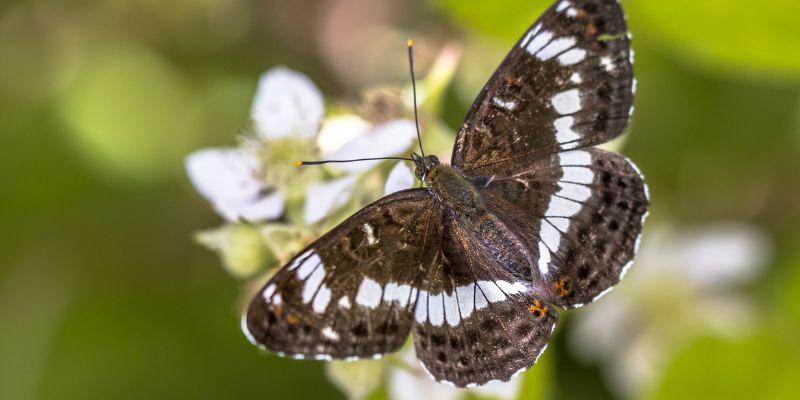
Butterfly numbers hit an all-time low across the UK
Butterfly Conservation declared a national ‘Butterfly Emergency’ in September after reviewing the results of this summer’s Big Butterfly Count, which showed a marked and incredibly concerning decline in numbers.
Although some of our visitors may take part in the Big Butterfly Count in their gardens or local parks, in the Heart of England Forest, we complete a much more intensive, 26-week-long survey called the UK Butterfly Monitoring Scheme (UKBMS). The six-month period in which we record butterflies helps our biodiversity team gain insights into patterns, which in turn highlight successes or indeed raise areas of concern.
Reasons for the rapid decline
Butterflies are a key indicator species not only in the Forest but within all areas of the UK; like bees, when they are in decline, we unfortunately know that the wider environment is at great risk too. So, what are the causes of decline in these important species?
-
Climate change
-
Loss of habitat
-
Butterfly-killing neonicotinoid pesticides
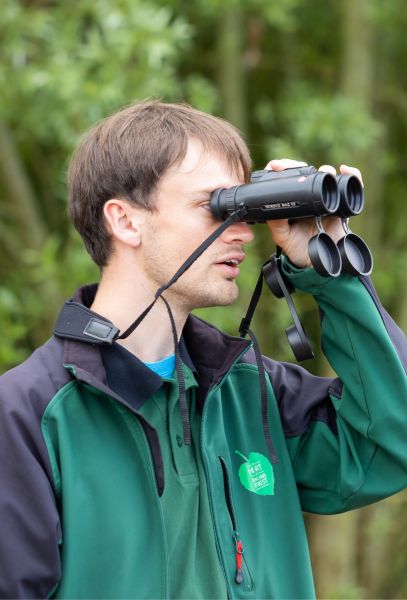
Butterflies in the Forest
The national data sadly reflects our own butterfly numbers recorded this year in the Forest. However, there have also been some successes. Take a look at some of our rarer species in the Forest:
Wood white
This is the only butterfly species classified as Endangered in Britain that you can find in the Forest. This year, according to our surveys, there has been a 50% loss in numbers. This is a worrying decline – we don’t want this species to be lost from the Forest. Our team with the help of volunteers continues managing the rides in the woodland they breed in diligently. We are hopeful with the help of our supporters that this species can grow in numbers once again.
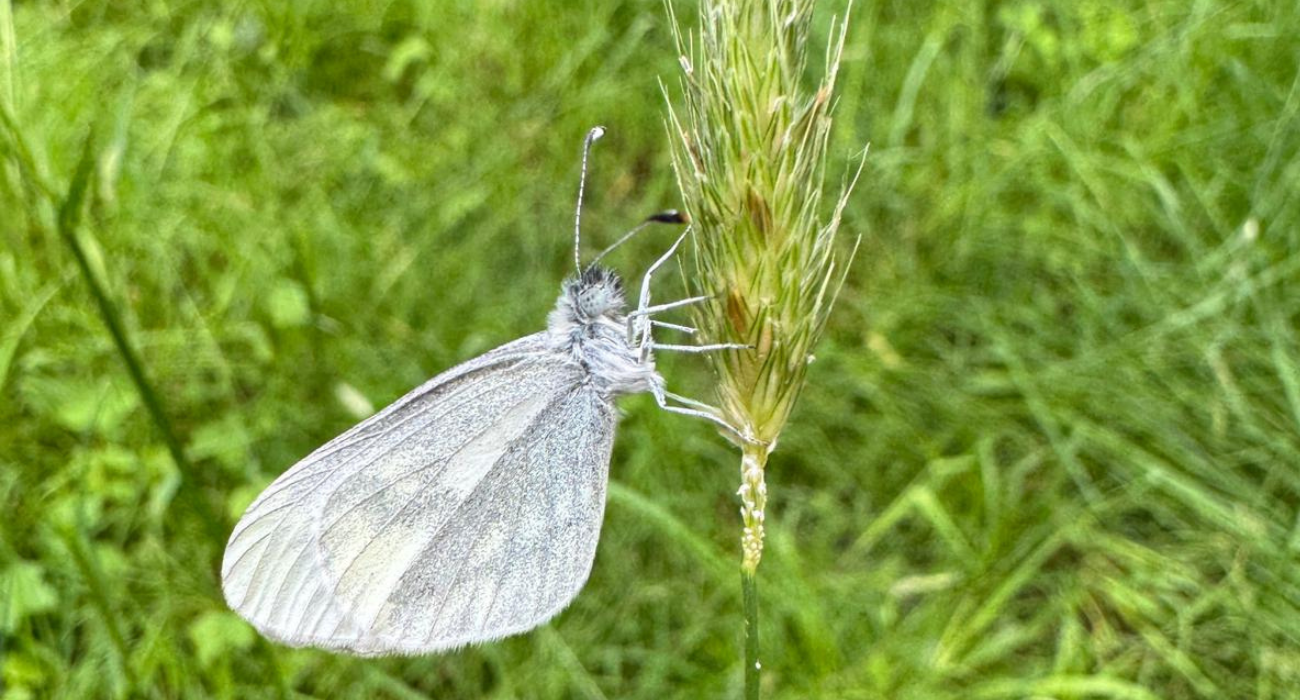
Small heath
This is still a widespread butterfly across the UK, but it has undergone a decline in abundance leading to its inclusion in the British Red List – a list of butterfly species threatened with extinction. You can see the small heath along many of the Forest’s footpaths where the grass is a bit shorter. This year, 101 small heaths were seen at the peak of the early flight season; this is lower than last year when 220 were recorded, but similar to 2021 when 116 were spotted. This suggests that it is not a great year for the butterfly species despite a booming year in 2023, but the fall in numbers is largely to do with the adverse weather conditions during spring.

White admiral
This butterfly is found primarily at Roundhill Wood and Coughton Park in the Forest. Unfortunately, none were recorded at Coughton Park this year, however, with the fluctuation in weather, plus only a small number recorded previously, we predicted this may be the case. At Roundhill Wood, they fared better, and we saw a slight improvement over last year's records.
In addition to this, our team did a survey at Roundhill Wood for the white admiral caterpillar which can easily be found due to their feeding damage on honeysuckle. We found two caterpillars using this method - the first to be recorded in the Forest!
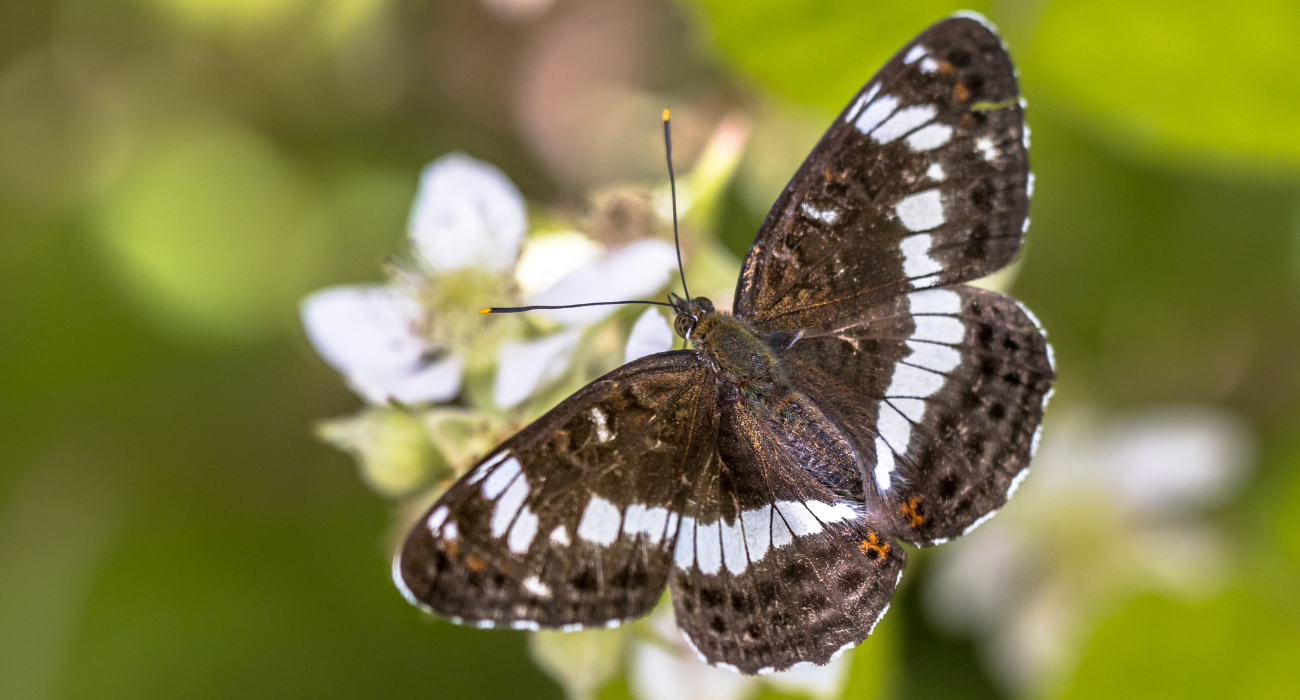
Brown hairstreak
Although brown hairstreaks are only just coming to the end of their flight season, the main survey period is yet to come when we look for the eggs from late autumn to early spring; this is when their primary caterpillar foodplant, blackthorn, has no leaves on it and the white eggs can be easily spotted against the blackthorns. No butterflies have been seen this year, but it is a notoriously difficult species to spot. This is not unusual for our records, and why we persevere with surveying for the eggs instead.
Last winter, Simon Primrose and Gillian Thompson, volunteers from the West Midlands branch of Butterfly Conservation, visited the Spernal area of the Forest. They found eggs in many new locations, confirming that the species is more widespread in this area than we previously knew. The brown hairstreak expanding its range locally and into the Forest is a success and hopefully, it should not be long before it turns up at new sites in the Forest like Gorcott Hill!
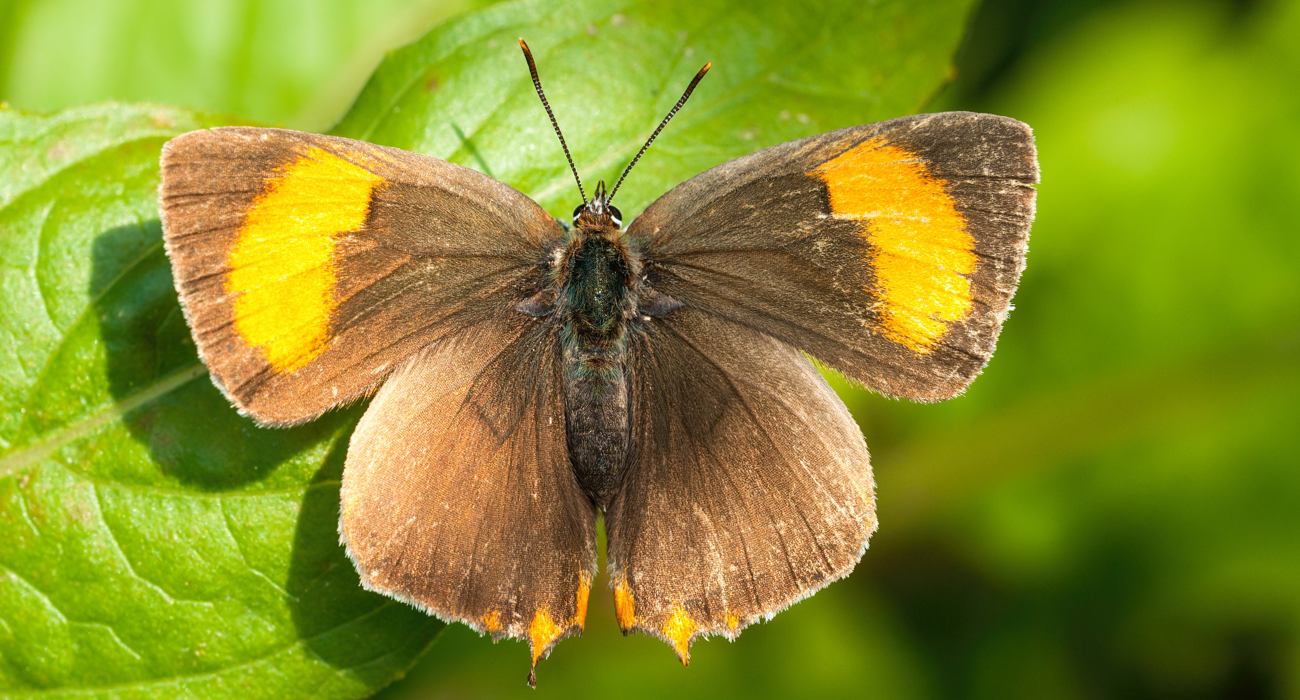
White-letter hairstreak
This species is on the British Red List because it breeds on elm trees, millions of which have died since the introduction of Dutch elm disease, therefore leading to a decline in this butterfly species.
Mike Slater from Butterfly Conservation Warwickshire ran an arboreal butterfly training session at Alne Wood where we saw at least five of these species around an elm tree during this session. Surveys elsewhere in the Forest afterward found none, although there was a period of poor weather partway through the flight season which may have led to reduced numbers during and after this.
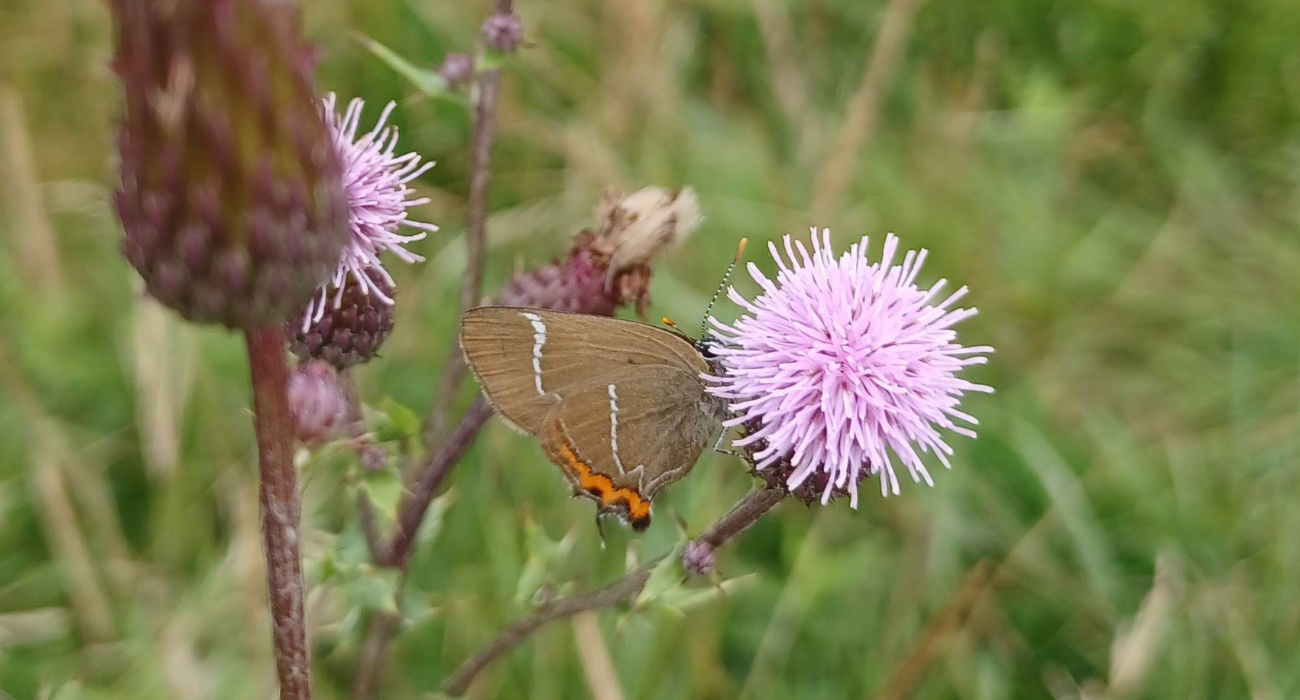
Dark green fritillary
Our biodiversity team has recorded dark green fritillary in the Sheriffs Lench area of the Forest. The dark green fritillary found breeding in Sheriffs Lench lays its eggs on hairy violets in calcareous grassland. This year is unfortunately the first since 2020 where we haven’t recorded the species, but it has only been recorded in low numbers previously so doesn’t mean that it is absent.
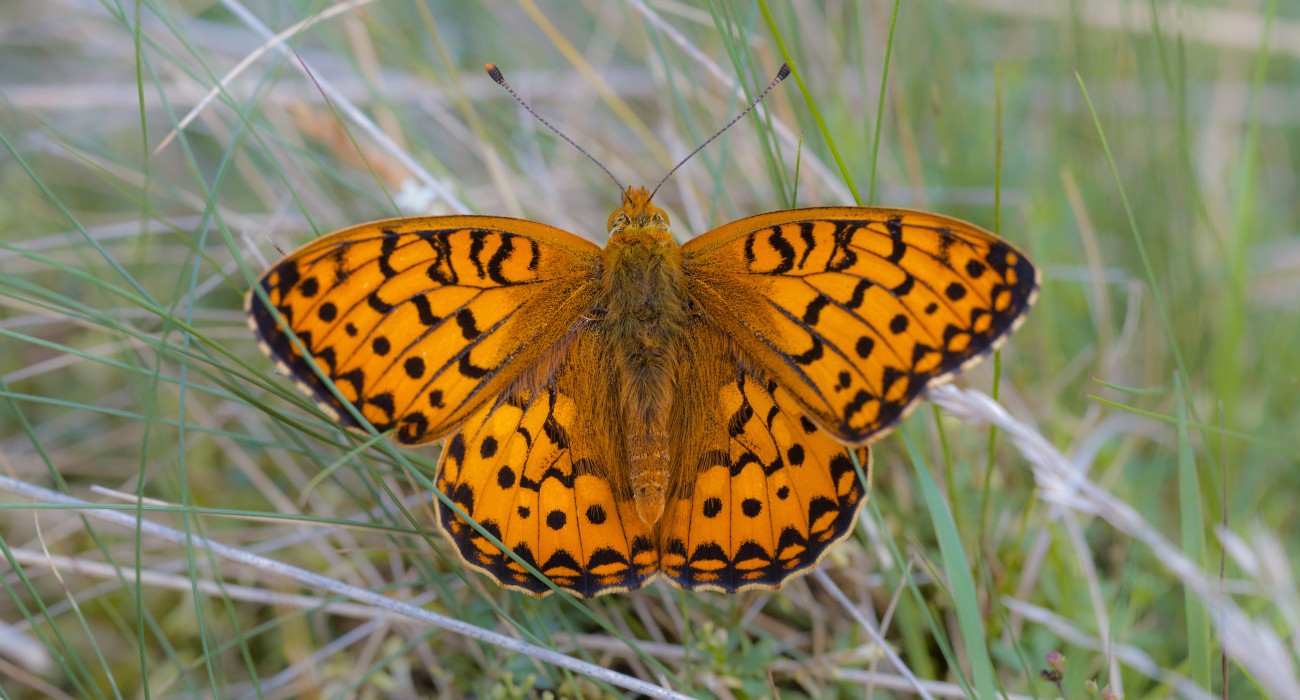
Grizzled skipper
Until this year, grizzled skippers were a species last seen in the Forest in 2020 at Sheriffs Lench, although they have been recorded since then in low numbers on neighbouring land, the Vale Landscape Heritage Trust’s Hipton Hill Orchard.
“I went out this year to see if I could find any eggs since no butterflies were seen during the flight period and I successfully found two eggs; this is also the first confirmation of the species breeding on our land.” Sam Macvie, Biodiversity Data and Survey Officer.
The eggs were found in calcareous (chalky/limestone) grassland on a plant of the rose family; agrimony. This is one of the grizzled skipper caterpillars' food plants along with wild strawberry, salad burnet, and creeping cinquefoil, which are all also present on the site.
Did you know?
The grizzled skipper requires its foodplants to be growing very close over a surface that can radiate heat like bare earth or gravel. Our conservation efforts on this site are focusing on providing this microhabitat in the grassland at Sheriffs Lench.
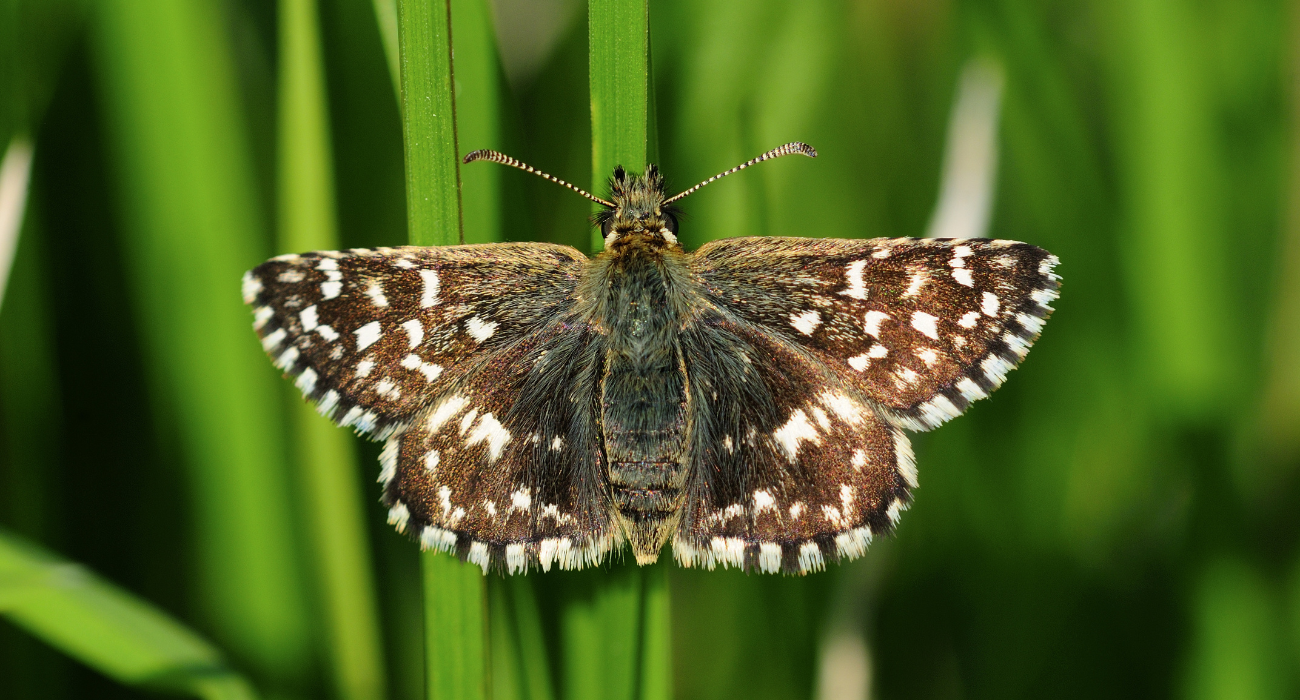
Be a reason our seven rarer species not only survive but thrive
Butterflies are a key indicator species not only in the Forest but within all areas of the UK; when they are in dire straits, so is the environment we live in. Therefore, we must act now to help mitigate climate change if we are to have a chance of turning the rapid decline of species into thriving colonies once again.
Help us protect our butterfly species for future generations by becoming a Friend of the Forest today.



